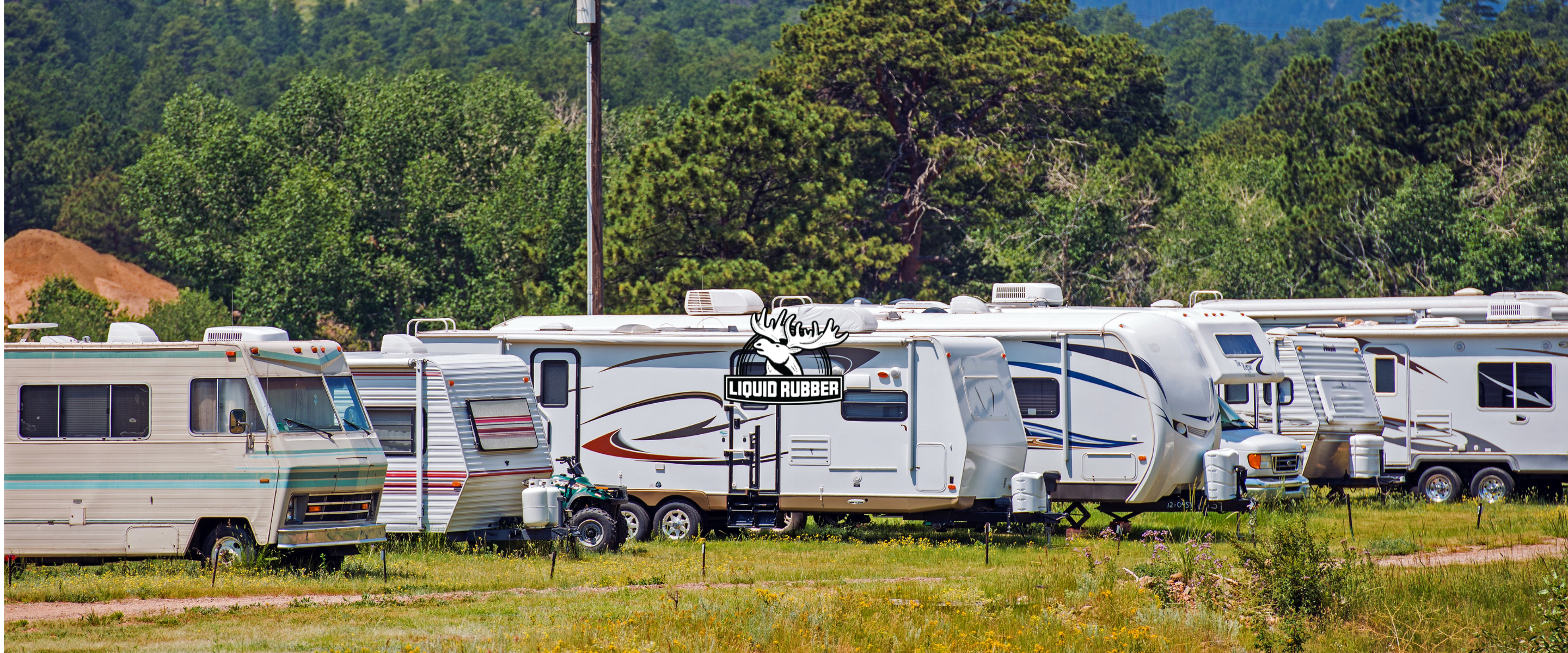It's that time of the year again when we prepare our recreational vehicles (RVs) for the camping season. Among the essential preparation tasks is checking and resealing our RV roof vents. Join us as we deliver some helpful, step-by-step guidance on using the best RV roof sealant, Liquid Rubber RV Roof Coating, so you can learn how to reseal RV roof vents using this product.
Why is Resealing Necessary?
Over time, the sealant on your RV roof vents can crack and deteriorate, causing potential leaks. Regularly checking and resealing these vents is crucial for maintaining the health of your RV and ensuring a hassle-free journey.
Selecting the Right Sealant
Not all sealants are created equal. It's essential to choose a product specifically designed for RV roofs. A high-quality RV roof sealant will be durable, flexible, and UV-resistant.
Enter Liquid Rubber RV Roof Coating - a VOC-free, non-toxic, and highly effective solution. This environmentally friendly coating transforms into a waterproof membrane when cured, providing your RV roof with the armor it needs.
Why Choose Liquid Rubber?
There are several reasons why Liquid Rubber is the obvious choice when it comes to repairing RV roofs and extending their lifespan.
-
Ease of Use: Liquid Rubber RV Roof Coating is easy to apply, whether you're a seasoned RV owner or a newbie.
-
Affordability: The cost of Liquid Rubber is competitive, especially when considering its quality and the protection it provides and the cost comparison between resealing your RV roof and replacing it.
-
Reliability: Liquid Rubber stands up to the elements, offering long-lasting protection against leaks.
-
Environmentally Friendly: Liquid Rubber is VOC-free and non-toxic, perfect for the eco-conscious traveler.
Prepping for the Task
Before you start, you'll need to gather a few supplies so you can prepare your RV roof for the repair.
- Liquid Rubber RV Roof Coating
- A roll of 4" x 50' Seam Tape
- A 1-gallon pail of EPDM Primer
- A 1-gallon pail of RV Smart Cleaner
- Clean, lint-free rags
- A soft-bristle scrub brush
- A paint roller or brush
Step-by-Step Guide
1. Clean the Roof
Wash your RV roof and clean it using the RV Smart Cleaner. Scrub lightly with a soft-bristle brush to remove any dirt or grime. Rinse thoroughly and allow the roof to dry completely.
2. Apply Seam Tape
Apply Seam Tape to all seams at the perimeter and around protrusions (vents, skylights, etc.). Be sure to overlap separate pieces of Seam Tape by at least 1 inch.
3. Prime the Roof
Apply the EPDM Primer to the roof, focusing on the detail areas (not the Seam Tape). Allow the Primer to dry until it is tacky.
4. Apply the Coating
Once the Primer is dry, apply a heavy coat of Liquid Rubber RV Roof Coating over the Seam Tape, extending at least 1 inch beyond the edges of the Seam Tape. Allow the Coating to dry completely.
5. Apply Additional Coats
Apply additional coats of the RV Roof Coating until you reach the desired thickness. Allow each coat to dry thoroughly before applying the next.
6. Inspect and Protect
Once you've applied the final coat, inspect the roof for any pinholes, blisters, voids, or thin spots. If you find any, repair as necessary using additional Coating.
Wrapping Up
Resealing your RV roof vents is a necessary task that can save you from expensive repairs down the road. With the right product and a little elbow grease, you can ensure your RV stays in top-notch condition. Liquid Rubber RV Roof Coating is an excellent choice for this task, offering ease of use, affordability, and superior protection.
For more tips and advice on maintaining your RV, check out our other articles. Safe travels! Now that you've successfully resealed your RV roof vents, it's time to hit the road and enjoy your journey, knowing that your RV is protected from leaks!
Ready to shop and get started on your next DIY project? Use code BLOG10 and get 10% off your next order right now!





